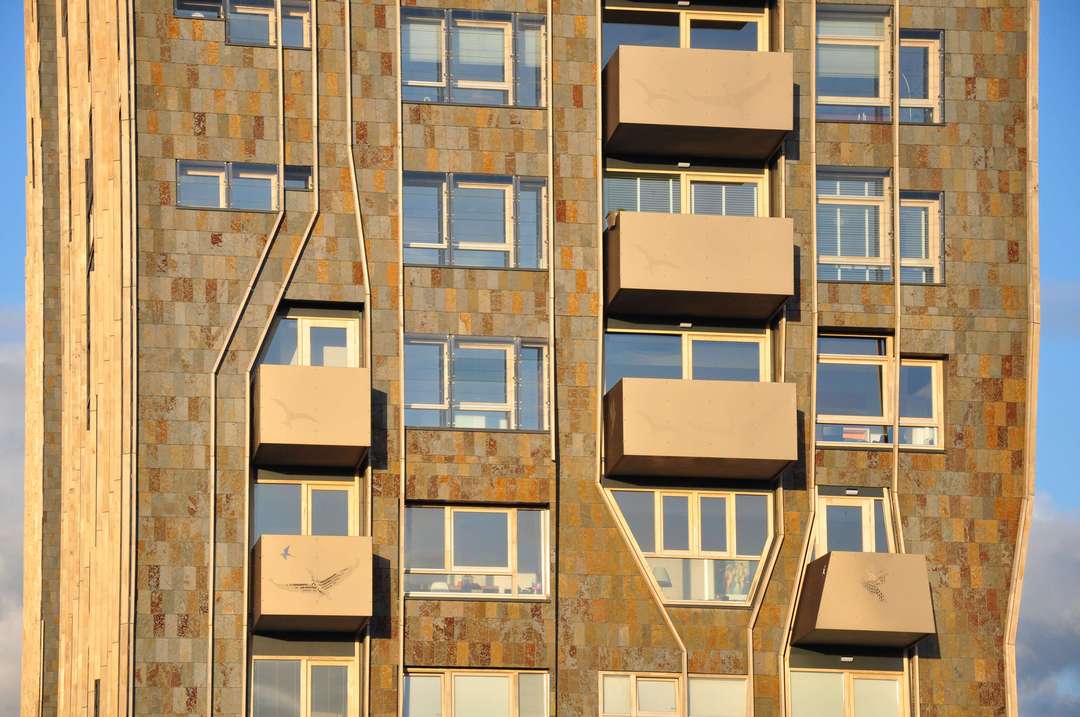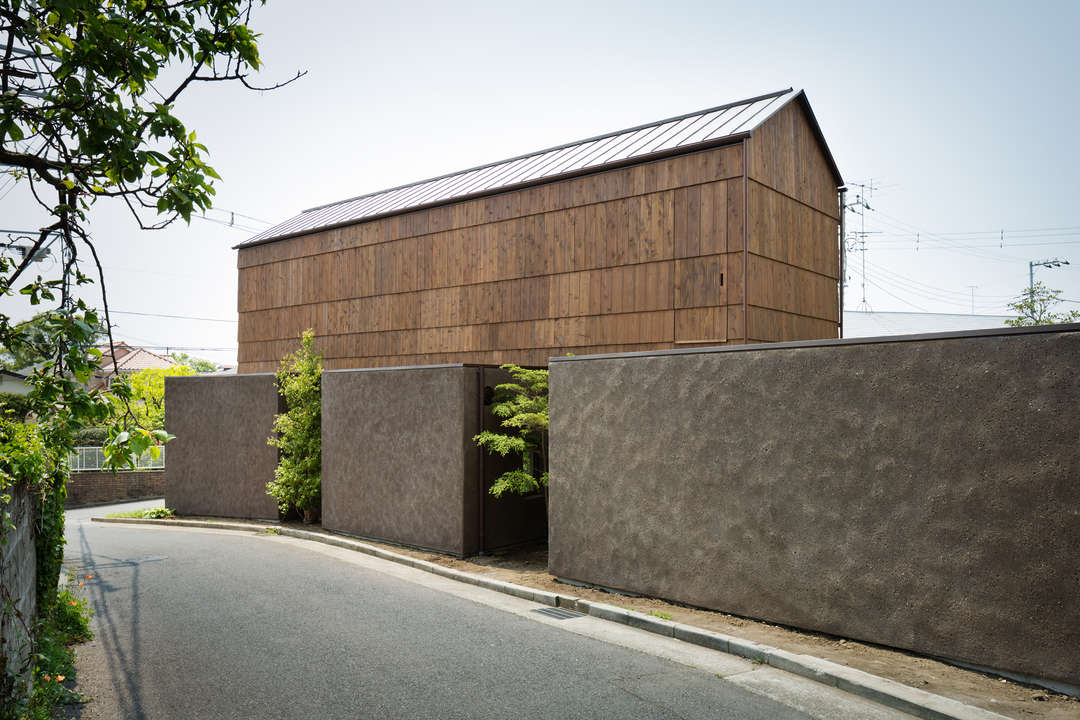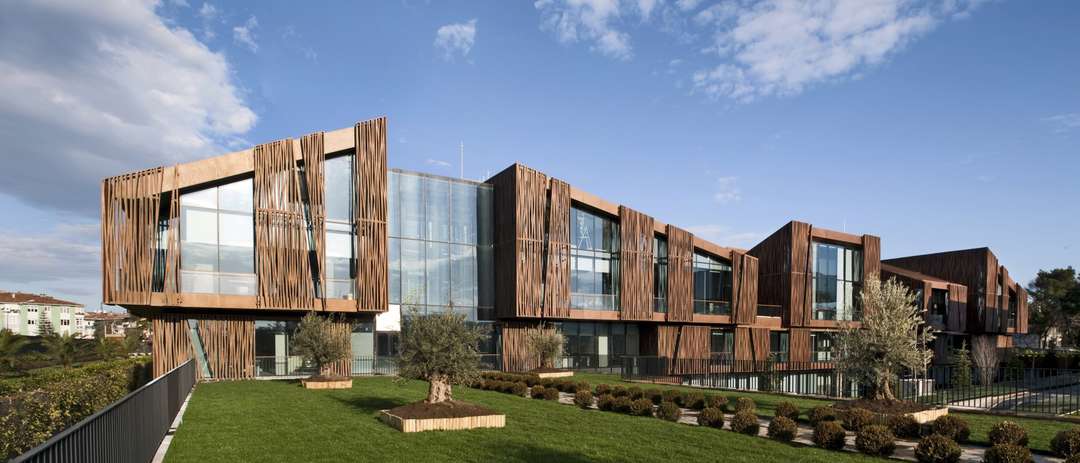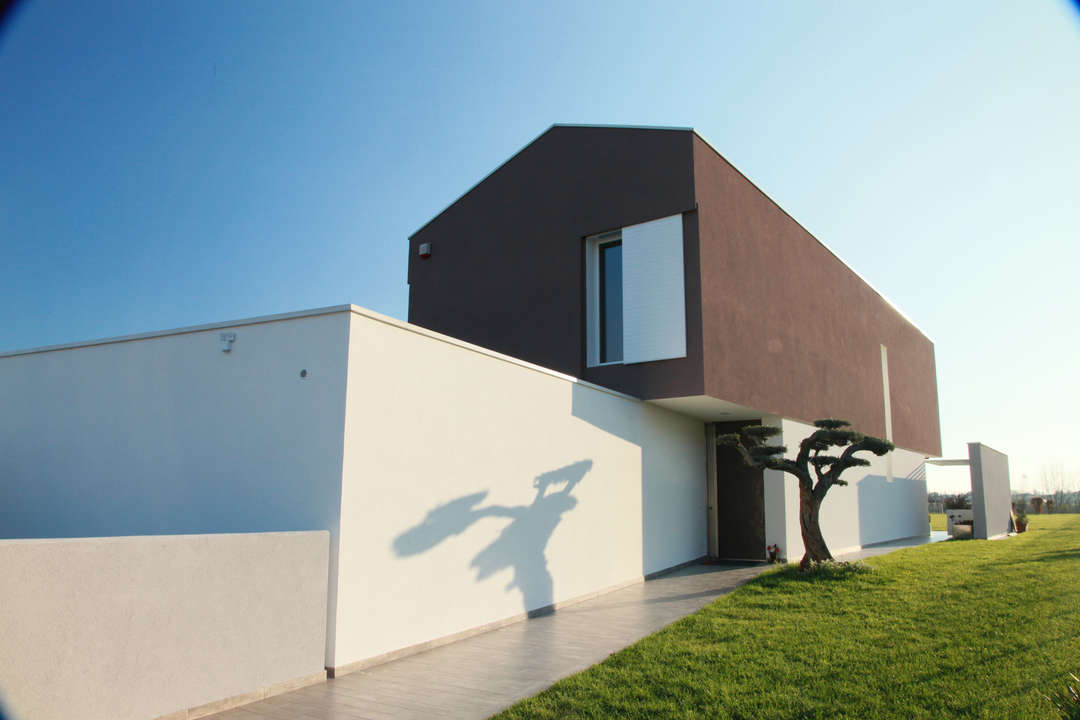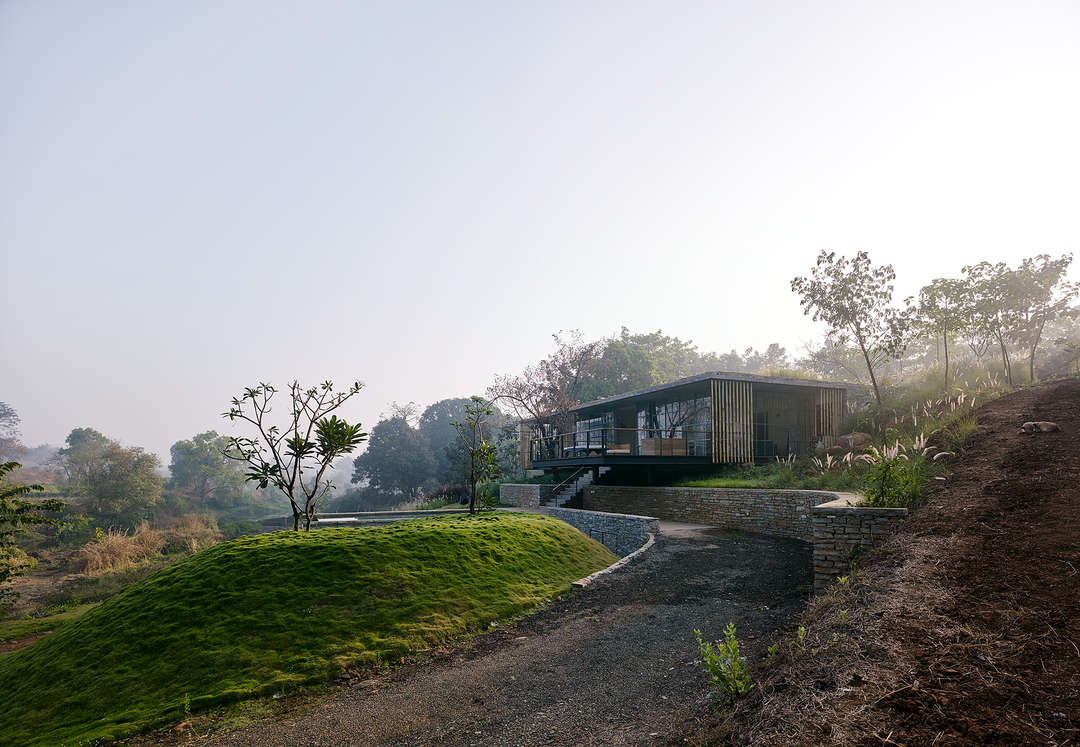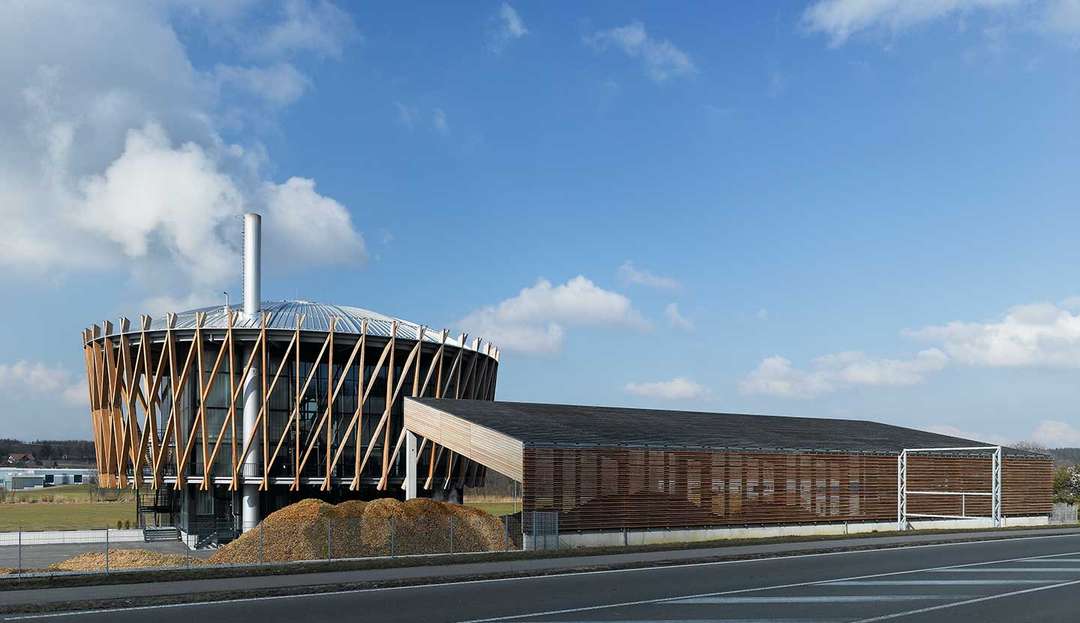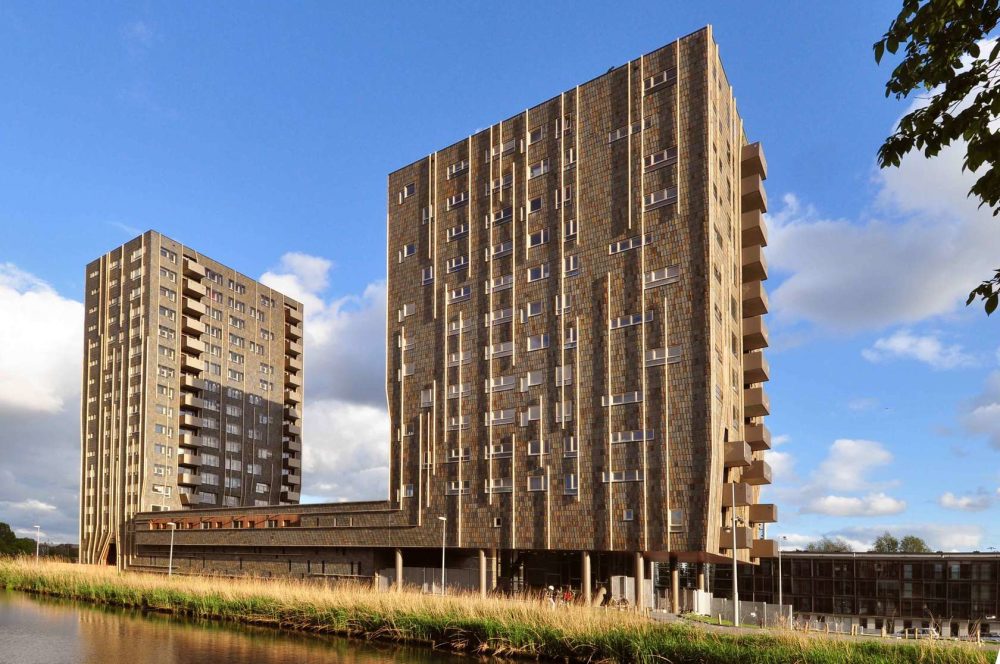
Brown is perhaps the color most taken for granted in architecture. Its use is pervasive, from the default appearance of wood to its role as an abundantly common exterior paint color in mass-produced suburban housing. We see brown everywhere, all the time, but rarely is it a feature. The projects in this collection make a prominent use of brown for an emphatic purpose, and in doing so bring the color’s associations along with them. Similar to green in its allusions to nature, brown is unique in that it specifically suggests the material of the earth itself: dirt.
While a colored plant may grow from the ground, it’s easy to distinguish the difference between the two because we’re used to seeing leaves change color and die. But the brown of a hill, mountain or even a tree is clearly an extension of the ground, due to its apparent permanence. In this sense, brown is the truest earth tone of them all, gently reminding us of our inescapable relationship with the surface we live on. As a matter of color choice, the buildings below do the same.
Science Park by 24H-architecture, Amsterdam, The Netherlands
Brown slate tiles are employed on the façades of these housing towers to give the appearance that they “root up from the ground.” Thin textured elements running up the towers further reinforce this naturalistic notion, allowing an entry at the bottom where they splay in a manner similar to that of thick foliage being parted by a pair of hands. At the top, the brown tiles turn slightly to gray, ostensibly to match the backdrop of the sky, though this move also alludes to the eventual decay of organic matter.
A House for Oiso by Dorell.Ghotmeh.Tane / Architects (DGT), Oiso, Japan
An earth-oriented focus was interpreted literally for the construction of this house, which uses soil excavated from its site as a finish material for the walls and floors of its lower portion. As a building material, the soil has good insulating properties, which also helps regulate temperatures above, in the wood-framed upper portion of the house. Symbolically, this material and color choice reflects reverence for the land beneath the house, as it stands in an area that’s been continuously inhabited for over 5,000 years.
Selcuk Ecza HQ by Tabanlioglu Architects, Istanbul, Turkey
A mesh exterior screen covers parts of this pharmaceutical company’s large office complex, colored brown to give it the soft effect of wood cladding. While the screen’s primary mandate is to enhance passive climate control, the pattern also, from a certain diastase, recalls tree bark, bestowing the building with an earthen quality. This association is further bolstered by the use of brown at select locations throughout the rest of the complex.
MA&MI House by 3ndy Studio, Fossò, Italy
The upper mass of this house was fully colored in brown as a way of complementing its natural surroundings. Set in the open countryside, the color is sharply visible against the daytime sky, making the house appear as if it could be an extension of the ground itself. As the brown upper mass shelters an outdoor roof deck, this color choice suggests to residents and their guests that the house is part and parcel with the natural vistas seen from its elevated position.
Plot 6 & Tea House in Jiangsu Software Park by Atelier Deshaus, Nanjing, China
For a suburban office park whose massing alternates between interior courtyards and low-rise, orthogonal structures, select walls are clad with a thick wood pattern. Finished in a deep brown, the pattern mimics a traditional construction method used in nearby homes. The wood façades appear tree-like when set against the area’s natural topography of gently rolling hills, and provide a stark contrast to the white side walls adjacent to them.
Bob Champion Research and Education Building by Hawkins\Brown, Norwich, United Kingdom
In certain seasons, the timber-clad rainscreen for this university building recalls the surrounding foliage. A natural appearance is enhanced by the variations in color and texture that appear on the wood as it weathers over time. Further matching in color the brick base of the building, the light brown that dominates the exterior is seen throughout the interior as well, present in a multitude of wood or faux-wood finish surfaces.
The Riparian House by Architecture BRIO, Karjat, India
Integrated into the side of a hill, material color was employed conscientiously in this house to give it the appearance of being part of the hill itself. Besides a planted roof that blends with the grass of the hill, the home’s base is constructed from a light brown, local limestone. The stone is banded in a manner visually similar to naturally occurring rock outcroppings in the area.
Biomass Power Plant by Matteo Thun & Partners, Tübingen, Germany
A reddish-brown wood lattice structure was used to surround the otherwise utilitarian-looking exterior of this power plant’s incinerator. The wood lattice is repeated on an orthogonal shed adjacent to the incinerator. Blending in with the surrounding countryside, the significance of the natural qualities of material and color choice were not lost on the plant’s designers, as similarly organic material is burned by the plant to power nearby homes and a hospital.

